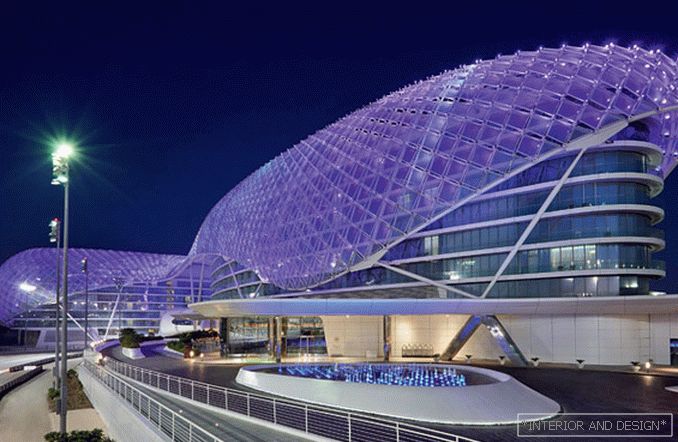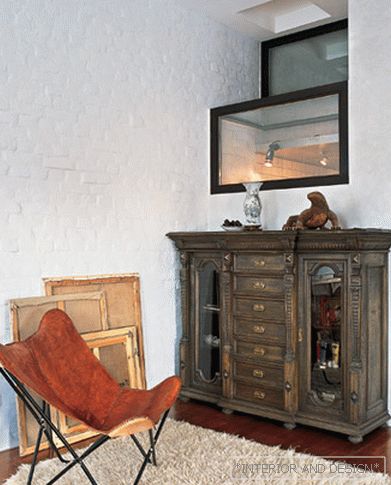Beauty, blonde, icon of the bourgeois 1970s. The designs of Gabriella Crespi were admired by Elizabeth Arden, Grace Kelly, Günther Sachs and the Shah of Iran, Mohammed Reza Pahlavi. Today, her "golden" things again on the wave of interior fashion.
Related: Chiara Andreatti: glamor, archaic plus rustic taste
Gabriella Crespi was born in 1922 in Milan, spent her childhood in Tuscany, not far from Florence. I admired nature, drew a little. The father, a mechanical engineer, showed the beauty of the structures and objects, the housewife mother taught the daughter of spiritual generosity. At the end of the war, the girl was on the Hebrides of Scotland, almost completely isolated. It was there that young Crespi had a “need for solitude and silence,” which she realizes in more mature years.
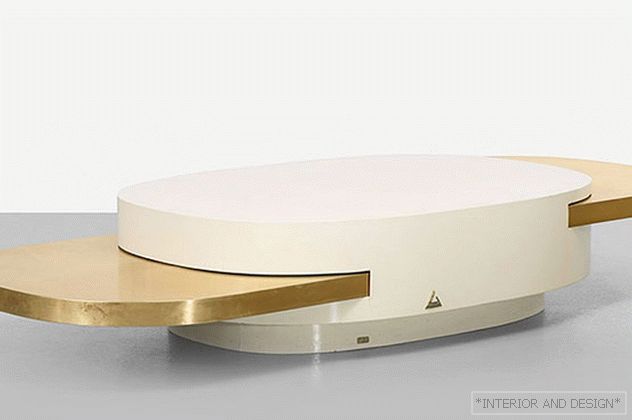 Elisse table, call. Plurimi, 1970. Lacquered wood, brass.
Elisse table, call. Plurimi, 1970. Lacquered wood, brass. Crespi studied architecture at the Milan Polytech, feeling like a continuer of the traditions of Le Corbusier and Frank Lloyd Wright - “in my youth I was in love with their projects,” said Crespi. Since the 1950s, she has dedicated herself to designing things for the global world, preferring forms at the intersection of design and sculpture. With her husband Giuseppe Maria Crespi Gabriella met in the tennis club of Milan. She married in 1948 and afterwards lived with the family of her husband, one of the richest in Italy. Crespi built a huge textile empire, their business was an important part of the country's economy, and the family owned the famous Italian newspaper Corriere della Sera.
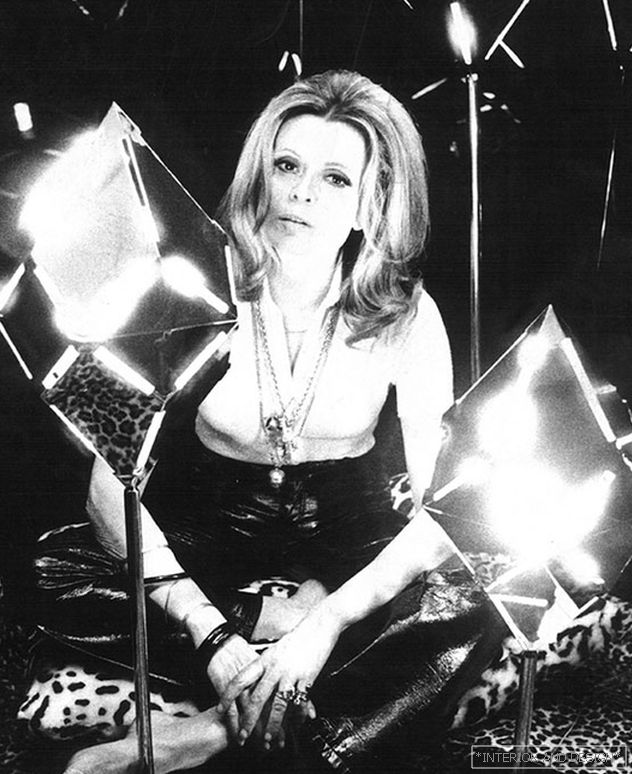 Gabriella Crespi.
Gabriella Crespi. Crespi made her debut with a series of Small Lune Collection items, in steel forms which reflected the spirit of the times and style of the era. In the early 1960s, she was friends and collaborated with House Dior, especially with regard to home and table decoration, and from the 1970s Gabriella Crespi took up their furniture. Gabriella Crespi has never had her own production or even a studio. In her fashionable penthouse, she drew models, and then went to the Milan workshops with drawings. Sometimes, by her order, prototypes were made in one night, cabinetmakers and metal craftsmen were ready to work for the beautiful blonde. At the peak of popularity in the 1970s, Gabriella Crespi maintained a showroom and a glamorous apartment in Rome, in the historic Palazzo Cenchi, in which her metal low tables were incredibly impressive next to the old frescoes of the Umbrian school.
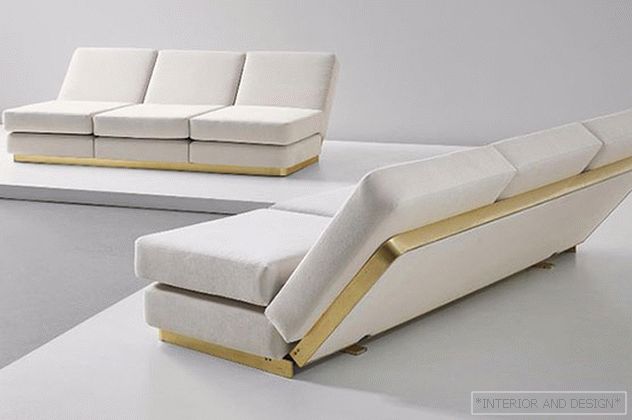 Quick-Change sofas, call. Plurimi, 1972.
Quick-Change sofas, call. Plurimi, 1972. In 1968, a prototype of its Plurimo was presented in Dallas as a convincing example of modern Italian design. New York gallery owner Susan Demish (Demisch Danant), who managed to buy a few spectacular items by Gabriella Crespi, is convinced that Crespi's items were more innovative than the opuses of her contemporaries Italian designers. Since 1970, her daughter Elisabetta Crespi has started working on the Plurimi collection with Gabriella. The entire collection is dedicated to the Italian artist Emilio Vedova. Metaphorical furniture forms Magic Cube, 2000, Dama, Scultura - experimental forms, the dialogue of light and space. In the same year, Kaleidoscope and Luna - leitmotifs in the works of Gabriella Crespi. Between 1970 and 1974, Crespi creates sculptures in lost wax technique. My Soul and the Animali collection are bronze sculptures: these fabulous images that demonstrate Gabriella’s special relationship to the natural world. Among her successes, Crespi called Jewels and Gocce Oro: free-floating forms made in the old technique of lost wax.
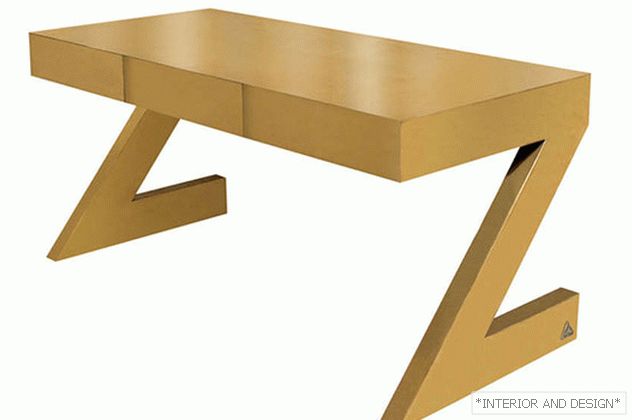 Desk Z, 1974.
Desk Z, 1974. Между 1972 и 1975 она спроектировала диван Quick Change Sofa, коллекцию Z, в том числе Z Bar, Z Desk, а также бамбуковую коллекцию Rising Sun. Она ценила бамбук за прочность и гибкость. Хит этой коллекции — знаменитые лампы Fungo, 1973. В 1976 года она делает новые Plurimi, среди которых Ellisse и Cubo Tondo, коллекция Sheherazade и «каменные скульптуры». Между 1978 и 1980 годами появились книжный шкаф Menhir, коллекция Yang Yin и два скульптурных стола Ara и Lunante. В 1980 Габриэлла Креспи спроектировала три новых Plurimi — Blow Up, Eclipse, Sit & Sip. В 1982 она представляла Punto ’83, ее последнее Plurimo, этот уникальный объект (прототип был сделан в том же году) в миланском Музее науки и техники был представлен на выставке I Plurimi di Gabriella Crespi.
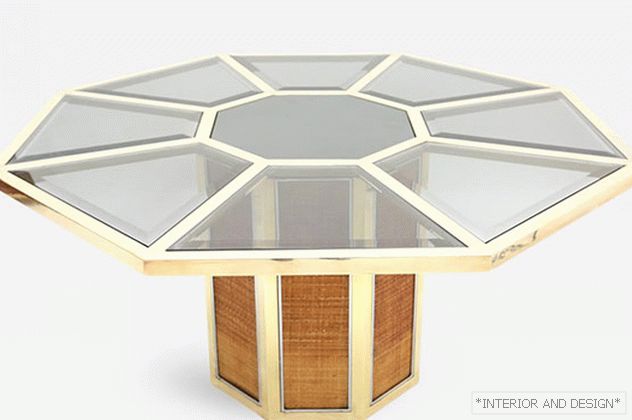 Stolik Puzzle, koll. Plurimi, 1973.
Stolik Puzzle, koll. Plurimi, 1973. 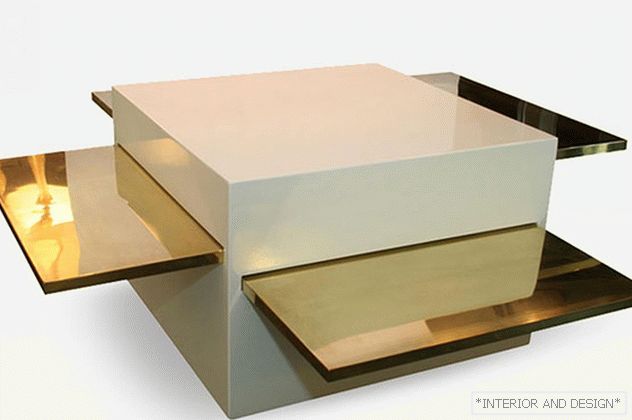 Table Cubo Magico, col. Plurimi, 1970.
Table Cubo Magico, col. Plurimi, 1970. In 1985, Gabriella Crespi gave the last interview. In 1987, she went on a tour of India, met Sri Muniraji there, who became her spiritual mentor. She became a vegetarian, led a Spartan lifestyle, tried to live between Europe and Asia, staying in the Himalayas for half a year. Then he settled for a long time in Wonderland. Crespi lived in India for almost twenty years without arriving in Europe. In 2005 she returned to Italy and began to write the book “In Search of the Infinite, Himalayas”, which was published in 2007.
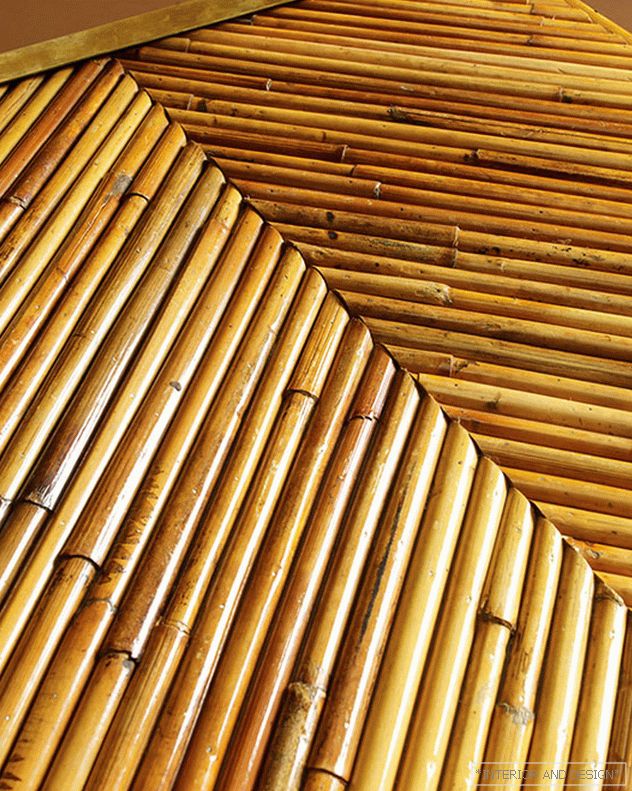 Fragment of the table, 1970. Bamboo and brass.
Fragment of the table, 1970. Bamboo and brass. In 2008, she created a limited reprint of some 1970s jewelery collections for the Stella McCartney brand. The proceeds from the sale of these items were fully donated to the Sri Baba Haidakhan Research Institute and Hospital in Chilianula in the Himalayas (ophthalmologic clinic founded by Sri Muniraji).
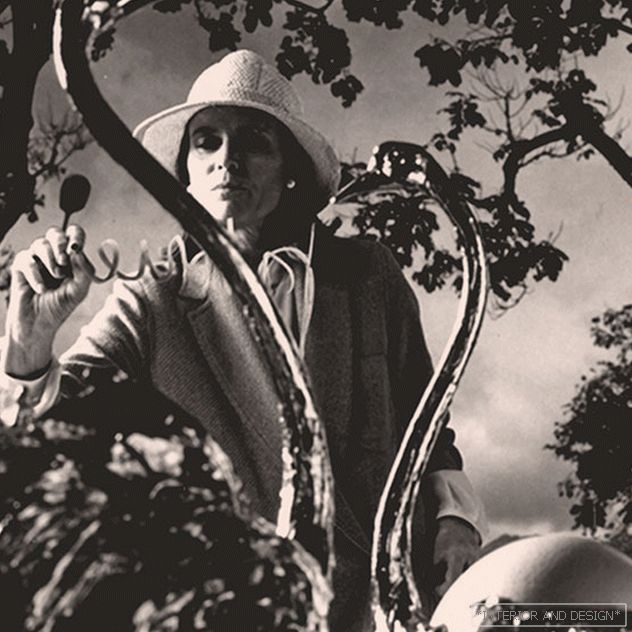 Gabriella Crespi.
Gabriella Crespi. 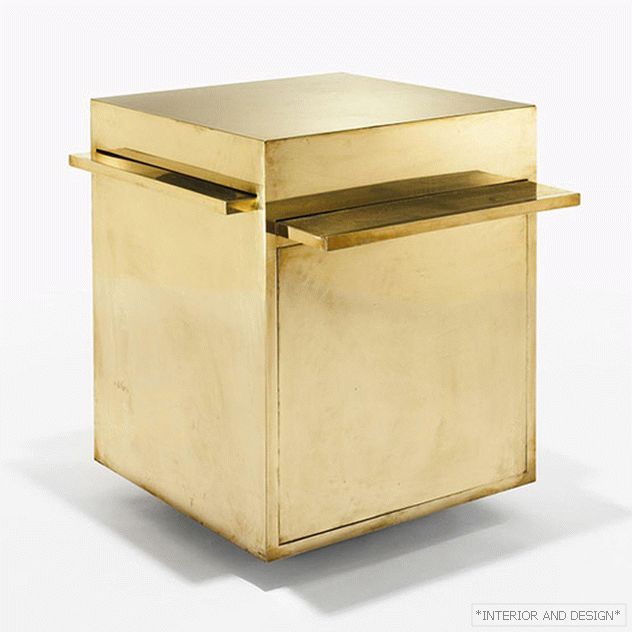 Table Cubo Magico, col. Plurimi, 1970.
Table Cubo Magico, col. Plurimi, 1970.  Lamp Fungo, call. Rising Sun, 1974.
Lamp Fungo, call. Rising Sun, 1974. 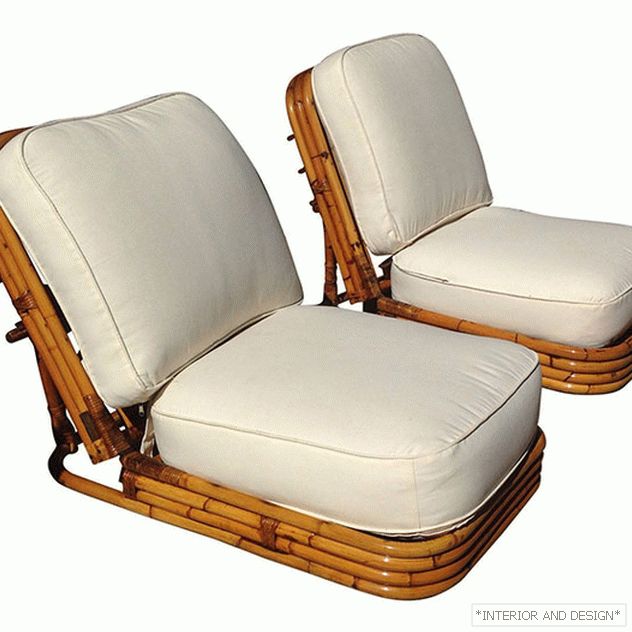 Chairs from call. Rising Sun, 1974.
Chairs from call. Rising Sun, 1974.  A table made of bamboo and brass, 1970.
A table made of bamboo and brass, 1970. In 2011, a grand retrospective on the work of Gabriella Crespi took place in the Palazzo Reale. The exhibition was financed by the Milan City Department of Culture, the National Chamber of Italian Fashion, and Mediolanum Farmaceutici S.p.A was a special sponsor. A group that honors respect and high designer status.
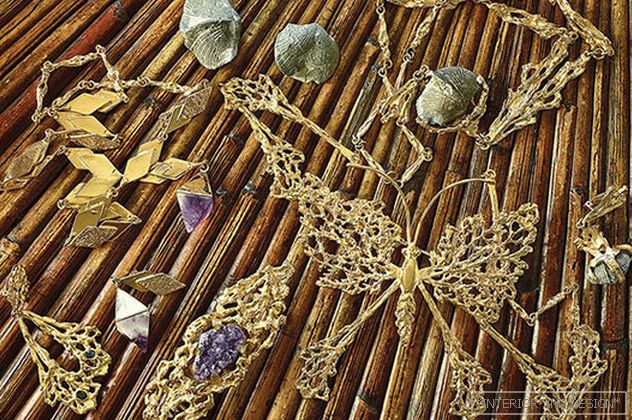 Butterfly Decoration, Fossile, Amethiste, 1974.
Butterfly Decoration, Fossile, Amethiste, 1974. In 2013, the Tavolo Scultura table was made from Belgian black marble. In 2015, at the Milan Furniture Salon, Gabriella Crespi presented the New Bronze Age collection - a series of limited editions included her “classic works”, first reprinted in bronze. In 2016, she did her last job - the Wave Desk. February 14, 2017 Gabriella Crespi passed away in Milan.
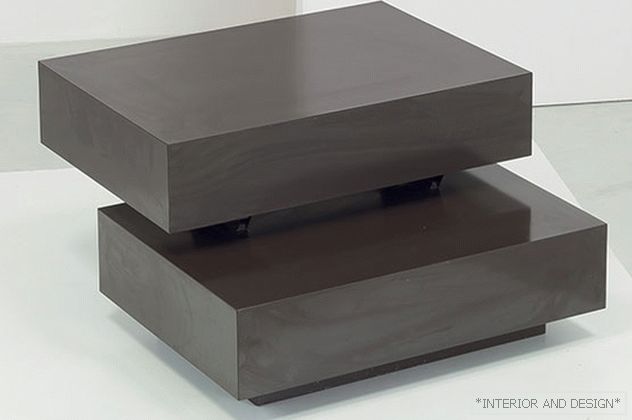 Tablet Scultura, 1970.
Tablet Scultura, 1970. 
